Category: NYC History
How times have changed
It is remarkable how much this transit hub at the southwest entrance to Central Park has changed over the years. I remember a time not too long ago — more than five years, but less than ten — when I would detour well out of my way to avoid this gritty roundabout and its forbidding maze of scaffolding. Columbus Circle was home to a shantytown in the early 1990s, and as recently as 2002, the surrounding area was still considered “a little seedy, bits of pre-Giuliani New York.” Enter one shiny 2.8 million square foot complex with its pricy residences, five star hotel, world class performance venue and (of course) shopping mall and it’s an entirely different scene. These days, Columbus Circle sits within (money) throwing distance of three of the city’s most expensive restaurants: Masa, Per Se and Jean Georges.
And of course, just a couple blocks north: starchitect Robert A.M. Stern’s ultra-luxury condominium tower 15 Central Park West, where former CEO of Citigroup Sanford Weill acquired a $42.4 million penthouse in August — low floor maids’ suites sold separately.
So where did all the homeless go?
Renovations to the circle itself were completed in Summer 2005 and included new benches, plantings and water fountains by WET Design, the firm responsible for the Fountains of Bellagio in Las Vegas.
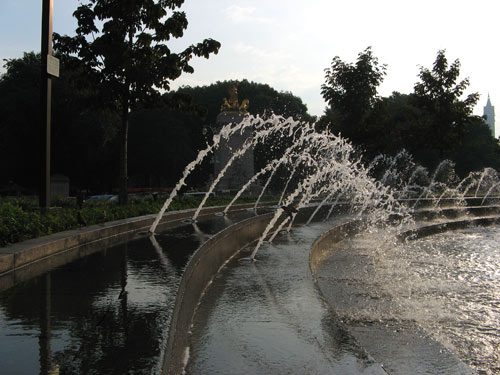
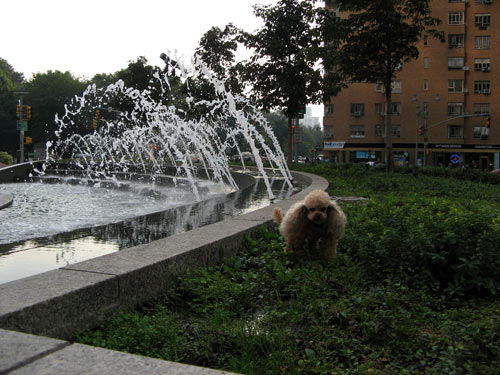
Fun fact: The Christopher Columbus monument at the circle’s center is the point at which distances to and from New York City are officially measured; just as in Boston, the highway miles are measured not to the city limits, but to the Massachusetts State House dome.
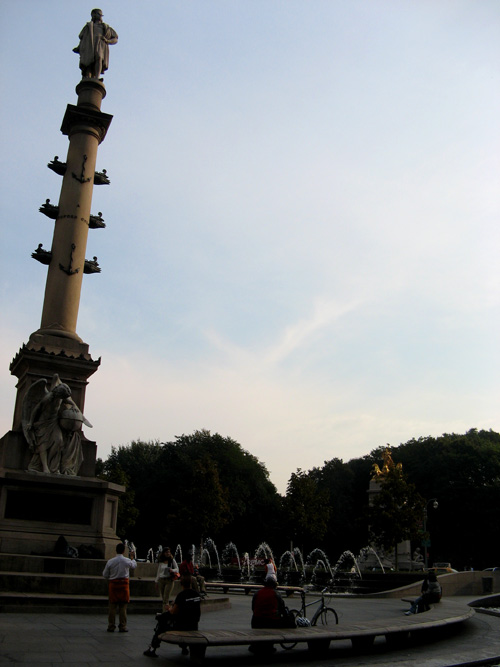
Flickr preview: glimpse a less sanitized New York at the graffiti artists’ reception at Ye Olde Carlton Arms Hotel (November 1, 2007)
OHNY 2007: Voelker Orth Museum
Site #2: The Voelker Orth Museum, Bird Sanctuary and Victorian Garden in Flushing.
The historic house was built in the 1890s and eventually purchased by Conrad Voelcker, a successful printer who emigrated from Germany in 1881 with just a wooden trunkful of possessions. For the next century, the house remained in the family until his granddaughter Elizabetha Orth’s death in 1995. Orth, a never-married retired schoolteacher with no descendants, left the house and its grounds (and a rather substantial sum of money) to the Queens Historical Society, the Queens Botanical Garden and the Theodore Roosevelt Sanctuary of the National Audubon Society in Oyster Bay, Long Island, stipulating in her will that her legacy was to be used to promote local history, Victorian gardening, and bird sanctuaries. The house – which had been looted and vandalized in the years immediately following Orth’s death – was restored with great attention to original period detail, and opened to the public as a museum in 2003. House tours are now conducted weekend afternoons throughout the year.
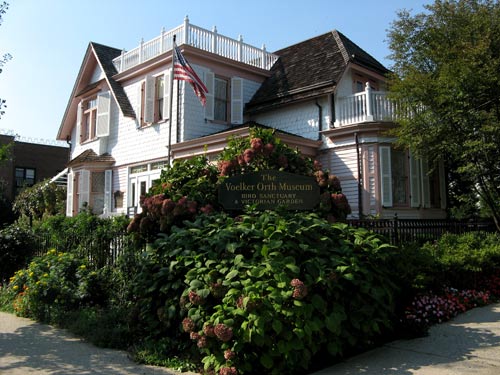
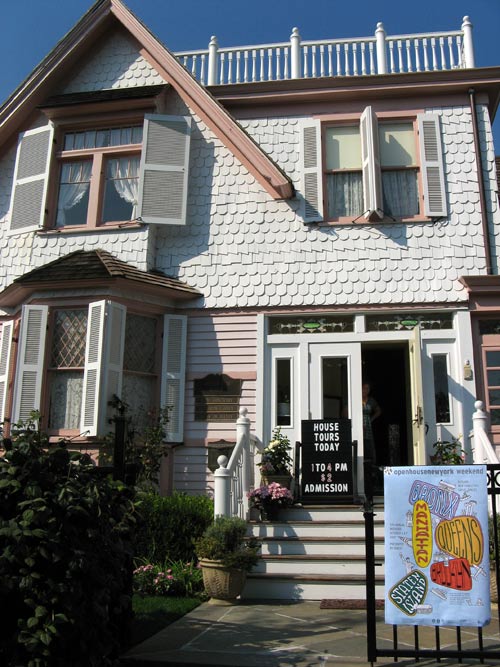
As we waited in the foyer for our OHNY guided tour to begin, I had a chance to talk with the museum’s caretaker, a young man who actually lives inside the house on a part of the upper floor, which has been converted into a separate (modern) studio apartment for that purpose.
Our guide brought us through the first floor rooms, which included a parlor outfitted with a still working victrola and a baby grand piano (not a Steinway, though), an intimate library, formal dining room and kitchen. Upstairs, we were able to view Orth’s bedroom, decorated as it would have been during her childhood, with her original bed, dresser and dolls.
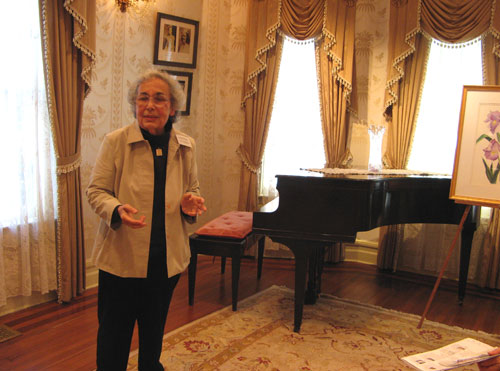
Perhaps the most distinguishing feature of the museum is the prize-winning Victorian garden, which is overseen by the Queens Botanical Garden. The period plants – including those inside the house — are not only landscaped in the Victorian style, but maintained using 19th century propagation methods and gardening techniques, such as hand pruning and natural fertilization.
J and C were able to join in on the tour of the house, which prior to this afternoon, none of us had any idea even existed — just another random glimpse into Queens history.
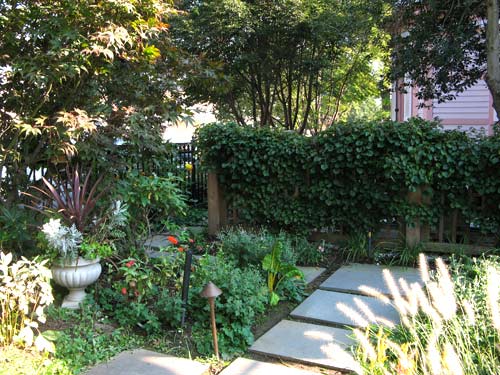
Check out the rest of the Voelker Orth Museum photos on flickr.
Hens and gators
Tonight, a gathering of the work crew — past and present — at English pub-themed watering hole, Pound and Pence, where Wednesdays is “Hen night.” Translation: 2-for-1 drinks for the ladies.
The bar operates on the first two floors of Liberty Tower, where in the 1920s future president Franklin D. Roosevelt had an office during his tenure as vice president of the Fidelity and Deposit Insurance Company of Maryland. The sublevel is now home to a wine store and a Starbucks — one of three within a one block radius of the office.
This unique-looking Neo-Gothic skyscraper was designated a National Historic Landmark in 1966, and in 1979, it became of one of the earliest conversion projects in Lower Manhattan when architect Joseph Pell Lombardi bought the building and converted it into luxury apartments. Still pricy luxury apartments.
The 33-story tower, based on a Henry Ives Cobb design, was completed in 1910. In 1919, it was purchased by the Sinclair Oil Company for use as their headquarters. Harry Sinclair, head of the company, had his private office suite built on the 29th floor with its views of the East and Hudson rivers. It was from those offices that in 1922, Sinclair bribed Interior Secretary Albert Fall to secretly lease the U.S. naval petroleum reserve in Wyoming to his oil company without competitive bidding, in what became known as the Teapot Dome Scandal.
The white terracotta-clad limestone building – unique for its time — is most notable for its fanciful ornamentation: birds, lions, this alligator (which flanks the Pound and Pence entrance) and a dozen roof gremlins, including one “who looks like a demonic Santa’s elf.”
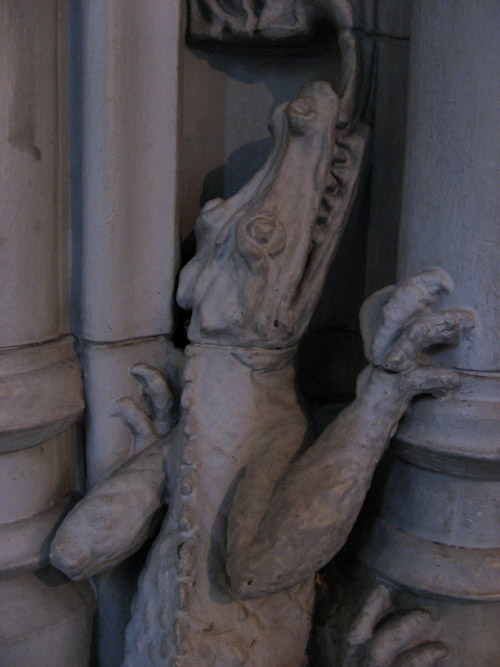
| S | M | T | W | T | F | S |
|---|---|---|---|---|---|---|
| 1 | 2 | 3 | 4 | 5 | 6 | |
| 7 | 8 | 9 | 10 | 11 | 12 | 13 |
| 14 | 15 | 16 | 17 | 18 | 19 | 20 |
| 21 | 22 | 23 | 24 | 25 | 26 | 27 |
| 28 | 29 | 30 | ||||
Search
Popular Tags
Categories
Archive
- July 2010
- July 2009
- January 2009
- November 2008
- September 2008
- August 2008
- July 2008
- June 2008
- May 2008
- April 2008
- March 2008
- February 2008
- January 2008
- December 2007
- November 2007
- October 2007
- September 2007
- August 2007
- July 2007
- June 2007
- May 2007
- April 2007
- March 2007
- February 2007
- January 2007
- December 2006
- November 2006
- October 2006
- September 2006
- August 2006
- July 2006
- June 2006